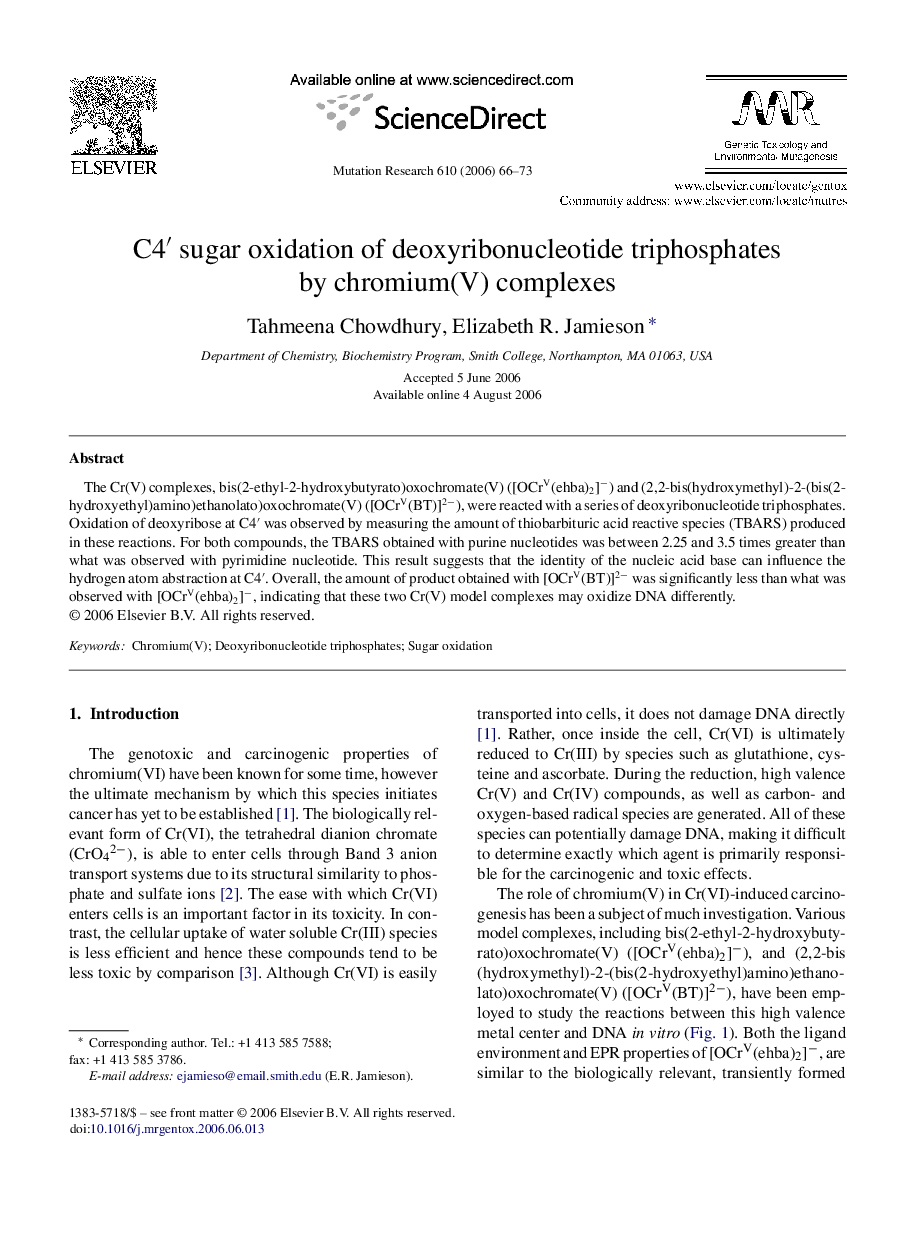| Article ID | Journal | Published Year | Pages | File Type |
|---|---|---|---|---|
| 2149329 | Mutation Research/Genetic Toxicology and Environmental Mutagenesis | 2006 | 8 Pages |
The Cr(V) complexes, bis(2-ethyl-2-hydroxybutyrato)oxochromate(V) ([OCrV(ehba)2]−) and (2,2-bis(hydroxymethyl)-2-(bis(2-hydroxyethyl)amino)ethanolato)oxochromate(V) ([OCrV(BT)]2−), were reacted with a series of deoxyribonucleotide triphosphates. Oxidation of deoxyribose at C4′ was observed by measuring the amount of thiobarbituric acid reactive species (TBARS) produced in these reactions. For both compounds, the TBARS obtained with purine nucleotides was between 2.25 and 3.5 times greater than what was observed with pyrimidine nucleotide. This result suggests that the identity of the nucleic acid base can influence the hydrogen atom abstraction at C4′. Overall, the amount of product obtained with [OCrV(BT)]2− was significantly less than what was observed with [OCrV(ehba)2]−, indicating that these two Cr(V) model complexes may oxidize DNA differently.
